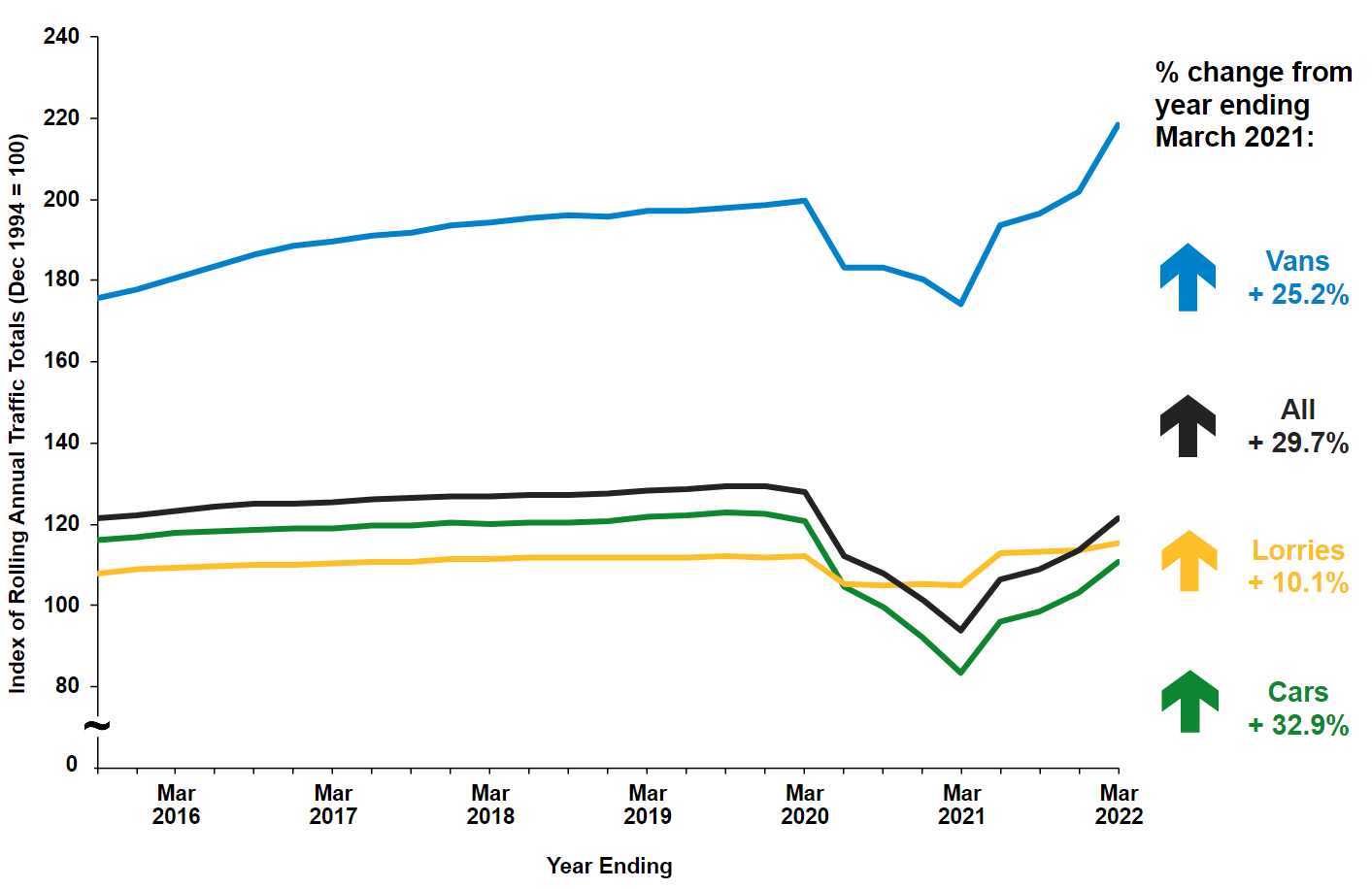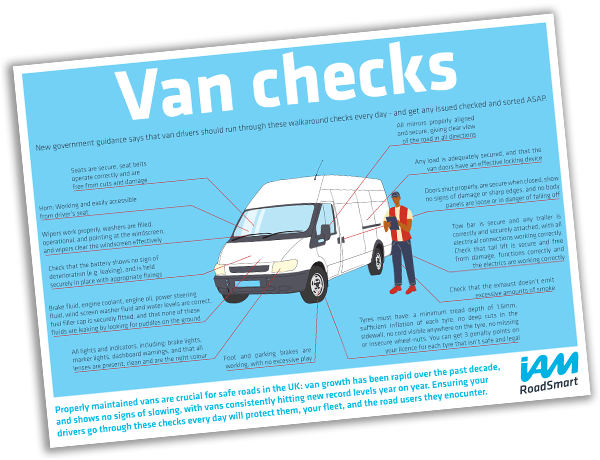
More than two and a half years since COVID-19 first gripped the UK, there are still fewer vehicles on the road than there were before the pandemic.
Two vehicle types are exceptions to this rule: HGVs, which have seen a roughly linear growth over the last several years, and vans.
Vans are the major exception: not only are there more vans on the road now than there were before the pandemic, but growth has in fact seen a sharp spike.
The above graph refers to total road miles by each vehicle type as a percentage of what they were in 1994. All traffic sources have grown substantially since then, with cars seeing the least growth, relative to 1994 numbers.
Vans are the clear outlier, with well over 200% of the total miles covered relative to 1994 numbers.
As more businesses respond to the demand for faster delivery times, and as technology continues to drive uptake of more efficient business administration, as well as growing numbers of customers who are likely to order products online rather than visit physical premises to make purchases, the sharp growth in van traffic seems set to continue.
Supply issues have meant that the UK market for new vans shrunk every month in 2022 except September, when it grew by 10.8%. Thus, increased van traffic has only been made possible not by sales of new vans, but by increased use of existing ones.
In July 2022, van sales were down by almost a quarter (23.9%) compared to the five-year pre-pandemic average for the month.
The growth in traffic is especially significant when compared to the stagnation of sales of new vans: with increased usage, vans and their drivers are at risk of being overworked.
What steps can you take to protect your vans and drivers?
- Invest in your drivers. A Driving for Work course can improve confidence with far-reaching beneficial consequences for your organisation.
- Foster a safety culture at your workplace. Organisations that encourage open communication and establish a culture of thinking seriously about safety gain a huge boost to their safety.
- Print our free van checks poster – and make sure these checks are done daily.
- Browse our free fleet safety posters and tips articles to stay up to date with excellent information and tips that will help keep your fleet, drivers and organisation safe.




